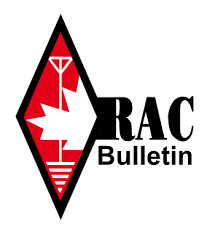RAC Ontario Sections Bulletin for October 29, 2022
Official Bulletin Station for Radio Amateurs of Canada with this week’s bulletin.
NATIONAL/INTERNATIONAL NEWS
1. If war is declared, these ham radio enthusiasts could be crucial.
An article from the LA Times about the resurgence of Amateur Radio in Taipei since licensing
began in 1984. There are about 25,000 hams on the island now.
See the full article by Stephanie Yang in the LA Times (October 27, 2022).
https://www.latimes.com/world-nation/story/2022-10-27/taiwan-ham-radio-amateurs-civil-defense
— Thanks to the Chinese Taipei Amateur Radio League [CTARL].
ONTARIO SECTION NEWS
ITEMS OF INTEREST
2. Hunting For Non Directional Beacons
It’s CLE time once again. This is a challenge for all newcomers to NDB listening and the ultimate
test of your medium frequency receiving capabilities. Can you meet the challenge?
‘CLE’s are ‘Co-ordinated Listening Events, and NDB DXers around the world focus their listening
time on one small slice of the NDB spectrum. (Frequencies between 400.0 – 419.9 kHz.)
A good target for all NA listeners is YPO on 401 kHz in Ontario. Listen for its upper sideband CW
identifier on 401.392 kHz.
When tuning for NDBs, put your receiver in the CW mode and listen for the NDB’s CW identifier,
repeated every few seconds. Listen for U.S. NDB identifiers approximately 1 kHz higher or lower
than the published transmitted frequency since these beacons are modulated with a 1020 Hz tone.
All NDBs heard in North America will be listed in the RNA database (updated daily) while those
heard in Europe may be found in the REU database. Beacons heard outside of these regions will be
found in the RWW database.
— by Steve VE7SL (Amateur Radio Newsletter)
3. Ham Radio “Gamification”
Setting operating goals has been useful in ham radio. They often provided a reason or incentive
to get on the air and make some contacts. I followed the typical award sequence of Worked All
States (WAS), Worked All Continents (WAC), DX Century Club (DXCC), and so forth.
Over time, I’ve come to realize that some amateur radio activities include the elements of gamification.
Gamification is a hot topic in user interface design, online learning, and other computer-based systems.
The basic idea is to incorporate gaming techniques into activities to increase user engagement.
Gamification can be used to make ham radio activity more fun and to more fully engage the participants.
Traditional radio contesting is clearly a competition and has the elements of keeping score, having
leaderboards (after the contest) and having teammates. However, most contests provide painfully slow
feedback. The official results may not be posted until 6 months later. (The 3830 Scores website was
created to bypass this delay by sharing scores immediately.) Contesting is obviously a game, so where’s
the gamification?
If you are getting stale in your ham radio operating, perhaps one of these gamified programs would be
good motivation for you. It could be SOTA or POTA (both include chasing, so you can do it from home),
or maybe some other program out there.
— 73 Bob K0NR (Amateur Radio Newsletter)
4. Central States VHF Society Celebrates 54 Years
The Central States VHF Society (CSVHFS), the oldest group in the country devoted to weak
signal VHF, held their 54th annual conference on July 21 – 23, 2022. Over 130 amateurs attended
the event, which was held in La Crosse, Wisconsin.
This year’s conference highlighted the recent activity with 222 MHz Worked All States (WAS), as well
as the Fred Fish Memorial Award (FFMA), the VHF Spring Sprints, and the year-long competition,
States Above 50 MHz.
— More information about CSVHFS is available on their website, www.csvhfs.org.
This concludes this week’s bulletin.
Bulletin sent from Official Bulletin Manager VA3PC
RAC Ontario Sections Bulletin for October 29, 2022

